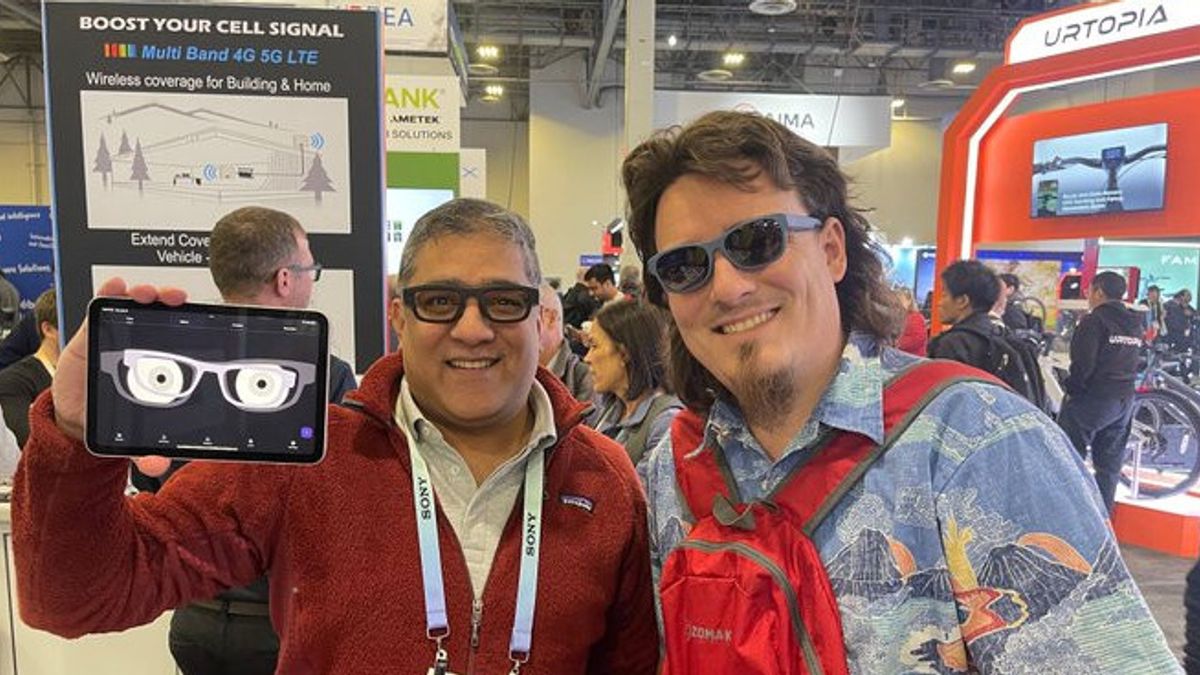JAKARTA - A new wearable device has been introduced at the CES event in Las Vegas this January. However, unlike the one used on the wrist to track the move, the device is mounted on the face and tracking brain function.
Called MindLink Air, this wearable is in the form of a pair of glasses that claim to optimize the user's attention throughout the day and maximize the time spent in an intense focus state called 'flow state'.
This difficult situation provides a feeling of euphoria when a person is fully involved in a task or activity, allowing them to fully focus on the moment - but scientists do not yet fully understand the experience.
While MindLink Air is designed to increase attention, the company believes this eye tracking technology can also help detect early signs of brain disease.
Some studies suggest that eye movements can slow down with cognitive declines, and the company believes that this wearable device worth 600 US dollars (Rp9.3 million) could detect these subtle changes in just a few months of use.
"The sooner you can detect it, the more likely prevention steps will be successful," said MindLink Air CEO Neil Sarkar, quoted by VOI from DailyMail.com.
Sarkar says that over the months and years of use, these glasses can show a small change in your eyes over time and provide early warnings about dementia, seizures, or other brain conditions.
For example, if your eyes see words for 15 milliseconds longer while reading, this could be an early warning sign of cognitive decline.
MindLink Air achieves this by mapping and tracking your eyes using six sensors when you wear these glasses. Because these sensors are behind the lens, you can wear any lens - prescription glasses, sunglasses, or something else - without interruption.
Main is a great way to track the brain, said Sarkar, because our eyes have a direct path to our brains. Two pathways, actually - optical nerves.
That's why doctors will check your eyes after you have a head injury or check your pupils if you pass out: The eye gives a window to the way the brain works. However, it's not just breathing and reflex that can be conveyed by the eyes.
"It turns out that you can also measure high-level brain responses such as cognitive, fatigue, and focus," said Sarkar.
The way they do it is with infrared light and small light sensors. When you wear glasses, infrared light rays cross your eyes several times per second.
This light bounces off your eyes and is captured by detectors in the frame of glasses. These detectors are what makes MindLink Air possible," said Sarkar.
SEE ALSO:
This device has a width of 300 micrometers and is thinner than human hair - so it can get inside the frame of the glasses.
These detectors capture 3D models from the eyes and all their behavior: Pupil widening and narrowing; distance and speed of eye movements from side to side; length and frequency flickering; and verification, how cross your eyes are.
All of this, when combined, provides a lot of data for Sarkar and his colleagues to find patterns and insights.
For example, your wavelength can be small but look longer when you spend more time on certain tasks.
Such small changes may be difficult to note, but these glasses will identify them.
Maybe you're tired. And maybe this helps you understand how long you should focus on one time. Or maybe when you are sharpest. However, working when you're tired can increase the risk of fatigue - the opposite of the flow situation.
The eyewear companion app will guide users on how to optimize focus and minimize risks.
Vergency measurements can provide some direct reminders. Because we cross eyes more when something is closer, if we spend a long time with our eyes slightly cross, MindLink Air can tell.
"If you're seeing something very close, and the text you're reading is small, in 20 minutes, you'd better take 20 seconds to see something 20 feet further," Sarkar said.
Most of the eye movements measured by these devices are simple, but the detectable differences are so small that there is no low-based way to do it.
One of the more complicated measures is related to the side-to-side movement. Usually, the further we shift our focus to the side, the sooner we do it.
So, if we read and move from word to word, we do it slowly. And when we finish by one line and jump back to the left side of the page, we do it faster.
"But when we shift the long distance slowly, or the short distance quickly, this could be a sign that you are not as smart as usual," said Sarkar.
Usually, you'll need research-class laboratory tools to capture these changes, but MindLink Air will record them while you're driving or anytime throughout the day.
Recording all day will help MindLink Air set the ground for you, determine what you should be 'expected' to see from you every day so that when something is different, these glasses will catch it. The goal is to change your behavior.
If you're not alert while driving or at work, you can rest. If you're very alert between certain hours, maybe you can turn off your phone at that time to make sure you're not bothered when you're focused.
MindLink is scheduled to launch Kickstarter in March, with eyewear shipments in the second quarter of the year - and customers will receive a 50 percent discount for supporting the campaign.
The English, Chinese, Japanese, Arabic, and French versions are automatically generated by the AI. So there may still be inaccuracies in translating, please always see Indonesian as our main language. (system supported by DigitalSiber.id)















